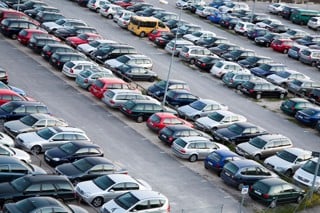By David Bartlett, head of accident management at the AA
At the point a vehicle is involved in an accident it suffers a loss in value. Even if repairs have been carried out to a high standard, there’s no escaping the accident history the vehicle inherits, and with this comes a reduction in what people will pay for it.
This diminution in value is being overlooked in many cases, but it typically averages between £825 to £1,500 per vehicle and can reach much higher values.
When you consider around 0.5% of the UK car parc will be involved in a qualifying road accident in a typical year, this loss in value quickly adds up.
For a fleet of 5,000 vehicles, on average, that’s a potential loss of up to £37,500 a year.
The reduction in value is based on how much the vehicle is worth immediately after it has been repaired, compared with how much the vehicle would have been worth if it hadn’t been involved in an accident.
It can be recovered in cases of non-fault accidents, where liability can be directed to another insured driver.
However, diminution in value isn’t front of mind or perhaps even a consideration at all for many of us when an accident happens.
In fact, at the point of an incident, once the safety and wellbeing of drivers has been assessed, for most fleets getting that vehicle back on the road is top priority. Downtime has significant costs. Or if it’s not the cost of downtime, then it’s the cost of repair.
For businesses already dealing with the ramifications of high inflation, fleet management is only getting more costly.
Earlier this year, analysis by Intelligent Motoring found that the cost of vehicle repairs has risen by 40% from 2018 to 2022 alone.
Energy, fuel, and insurance costs too, have all experienced increases.
With fleet budgets under strain, businesses can’t afford to overlook the cost of diminution in value. Neither should they ignore the opportunity to recover that loss.
Evidencing loss of value
So, how does diminution in value fit into the accident management process?
Once a vehicle has been recovered, it needs to be triaged, using a combination of extensive knowledge, data, and market-leading systems.
The vehicle undergoes a detailed series of checks, and a comprehensive report is produced which details the vehicle’s damage and what the resulting value will be at the point of sale.
Importantly, the triage process should take place while the vehicle is in for repair, so no additional downtime is incurred.
Then if a vehicle meets the criteria required for a diminution in value claim, an expert solicitor will manage everything from here on in.
The loss in value is identified, evidenced, and then recovered on a customer’s behalf.
It should be a seamless process, that takes place behind the scenes, without interrupting the day-to-day running of a fleet.
Taking an end-to-end approach
As businesses continue to strive for greater efficiencies and value across the board, we’re seeing a rise in fleets approaching accident management as an end-to-end solution and this is exactly where diminution in value sits.
Fleets are moving away from looking at individual aspects such as insurance, roadside assistance, and repair in isolation, to strategically linking them into a single service.
This new approach is saving businesses costs and administrative time, while getting vehicles back on the road quicker and reducing VOR (vehicle off-road time).
Prioritising accident management
Looking ahead, we all know it’s best practice to regularly audit, review, and adjust all fleet management processes. Accident management is no exception.
For any fleet that hasn’t considered the loss in value they might be incurring at the point of incident, as cost pressures continue to mount, there’s even more reason to rethink this approach.
Working with a partner to audit the fleet process and identify where potential savings and efficiencies are being overlooked, should be a vital part of future fleet strategies, as business look to strengthen their resilience in a fast changing economic and transport landscape.




















Login to comment
Comments
No comments have been made yet.